Work with the Equation Editor (instructor)
Jump to section
The Equation Editor contains a series of symbol palettes that can be used to create formatted mathematical expressions and chemical equations.
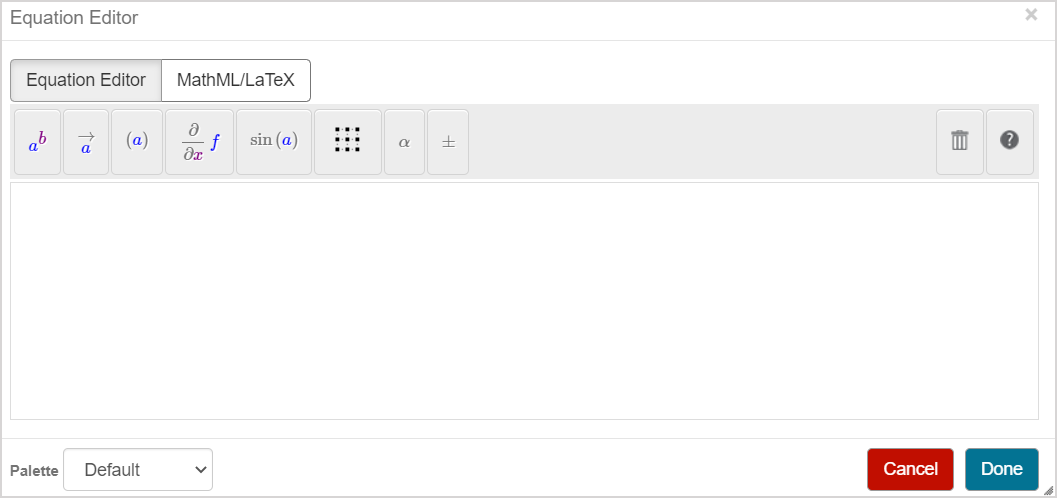
Instructors have access to a diverse Equation Editor to add symbols, functions, and operators to items being authored.
The Equation Editor is organized into two palette groups, each with their own unique set of palettes:
- Default
- Chemistry
You can access the Equation Editor from most authoring areas of Möbius where the Visual Editor is found while authoring items such as:
- Question statements
- Correct answers for certain question types
- Hints
- Feedback
- Lesson content blocks
- Class message
The item that you select from a palette is entered as a template with placeholders that you can replace with your own custom values, if needed.
You can also use MathML or LaTeX to enter symbolic math expressions instead of using palettes.
Available palettes
Use the Palette drop-down list to select the palette group that you want to use.
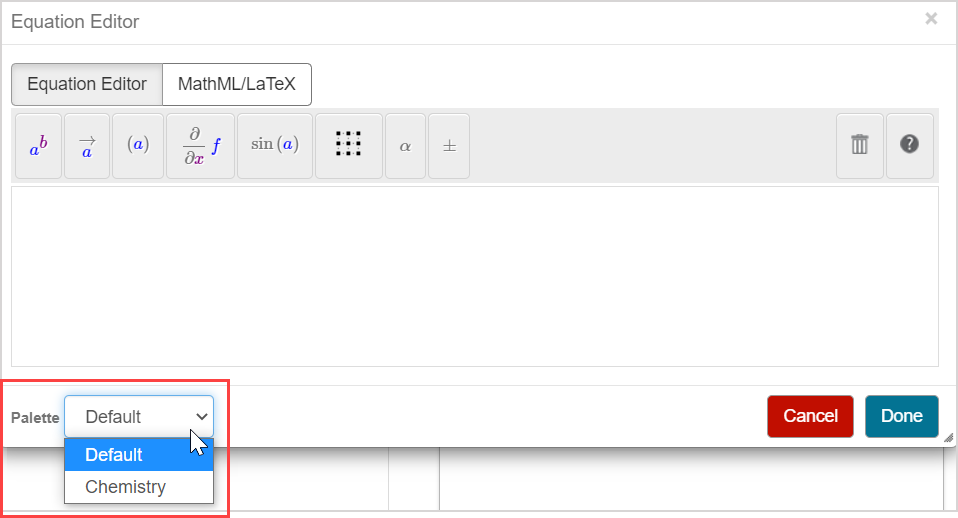
- This is the Default palette group:

- The following palettes are available in the Default palette group:
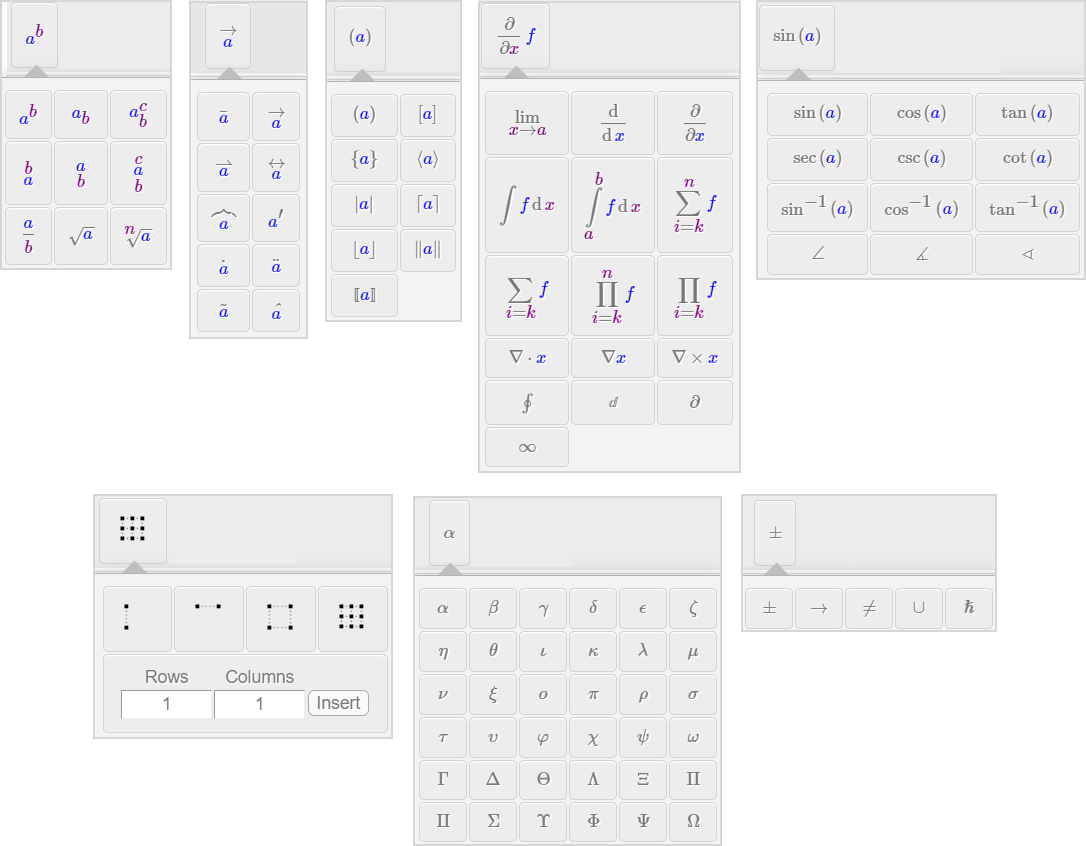
NOTE: This relational palette ![]() has additional child palettes that you can make selections from.
has additional child palettes that you can make selections from.
- This is the relational palette:
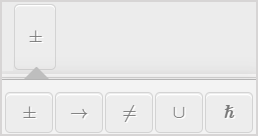
- This is the first level of child palettes that you can choose from within the relational palette:
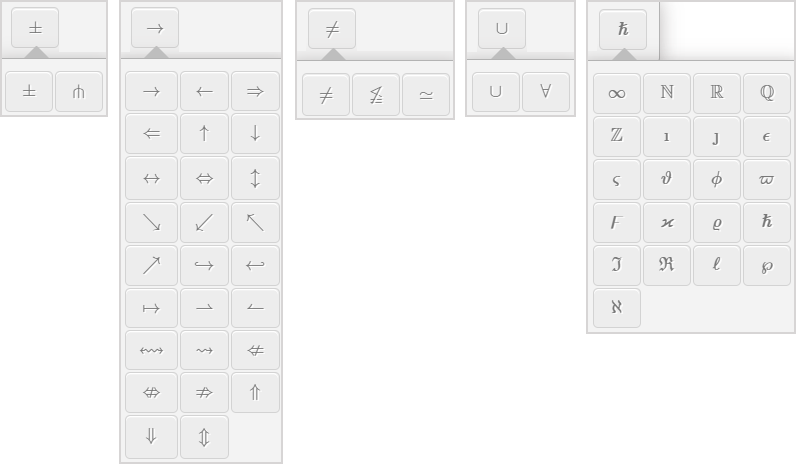
- This is the second level of child palettes that you can choose from within the relational palette:
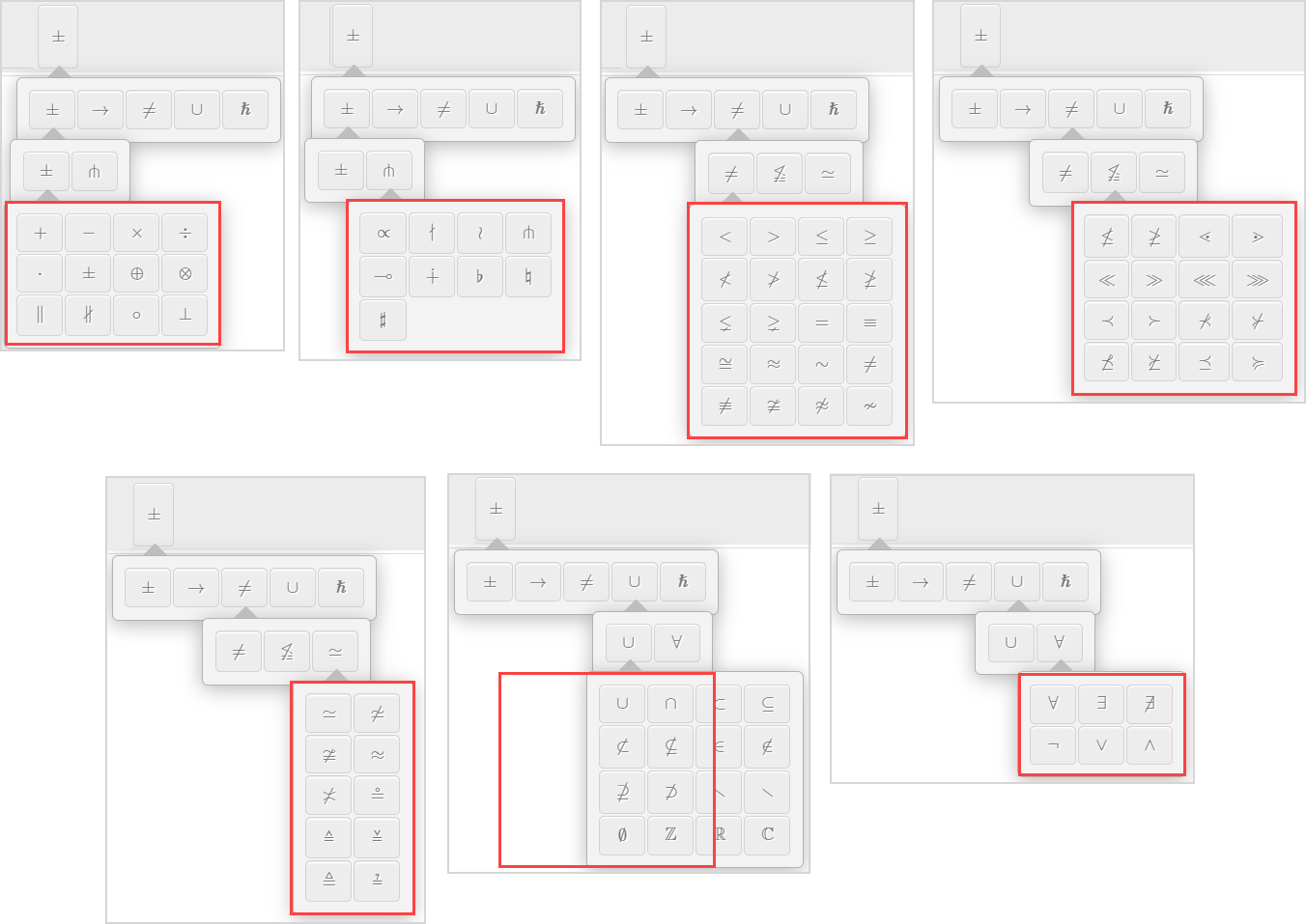
- This is the Chemistry palette group:

- The Chemistry palette group has all of the same palettes as the Default palette with the following two exceptions:
- This additional palette is found in the Chemistry palette group:
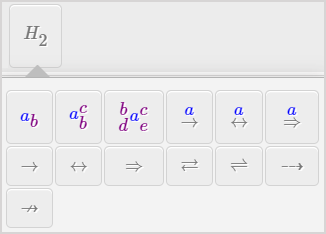
- This palette is excluded from the Chemistry palette group:
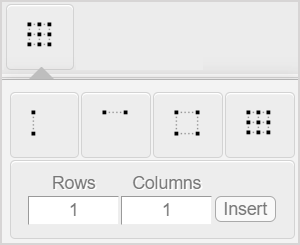
Use the Equation Editor
To use the Equation Editor to insert symbols, functions, or operators:
Click Equation Editor
 from the Visual Editor that you're working with. Example — You might be authoring a question from the Question Editor.
from the Visual Editor that you're working with. Example — You might be authoring a question from the Question Editor.
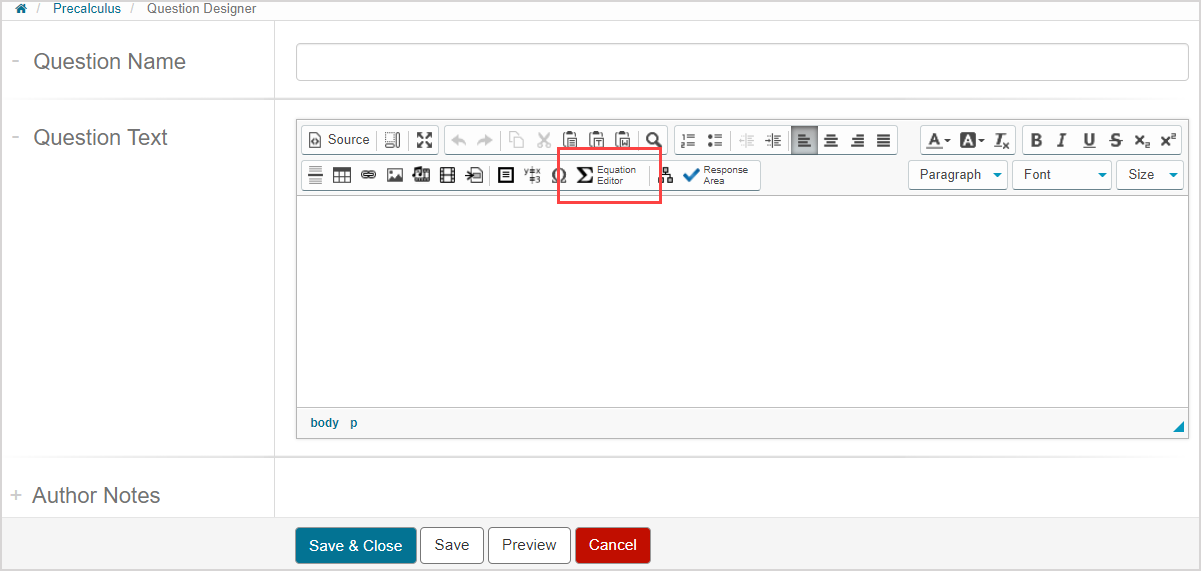
Select the palette group that you want to use from the Palette drop-down list.

TIP: You can switch between the Default and Chemistry palette groups at anytime while creating your expression or equation.
Click on a palette from the selected palette group to reveal the available symbols, functions, and operators.
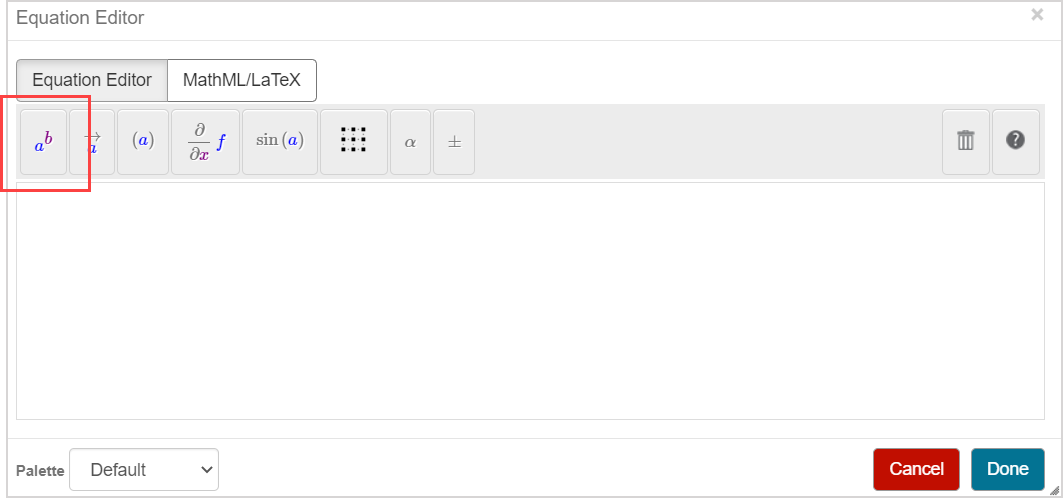
Click on the symbol, function, or operator that you want to use.
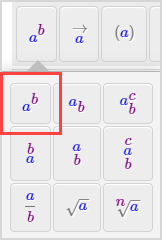
Your selection is inserted into the Equation Editor entry field. Replace the template placeholder values with your custom values as needed to complete your mathematical expression or chemical equation.
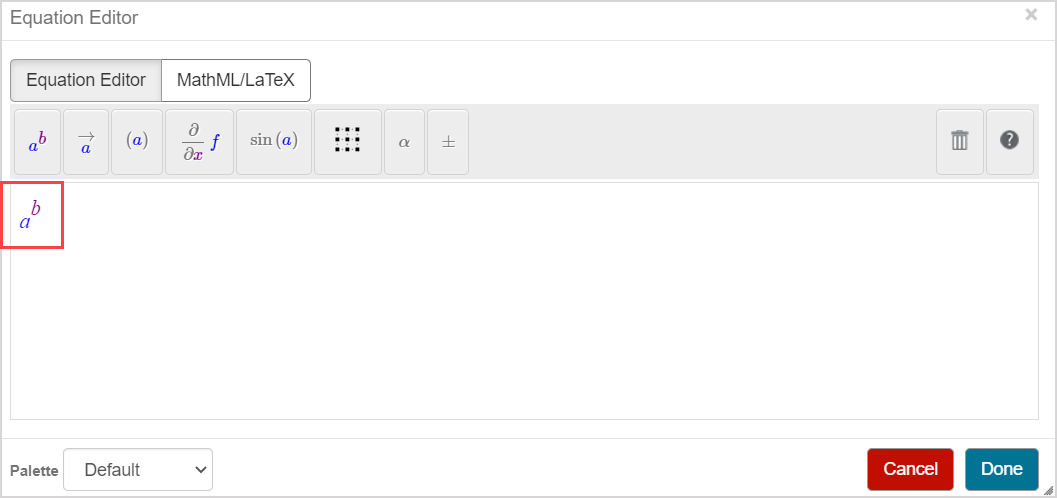
NOTE: The Equation Editor has a Syntax Checker that highlights empty placeholders and unmatched parentheses.
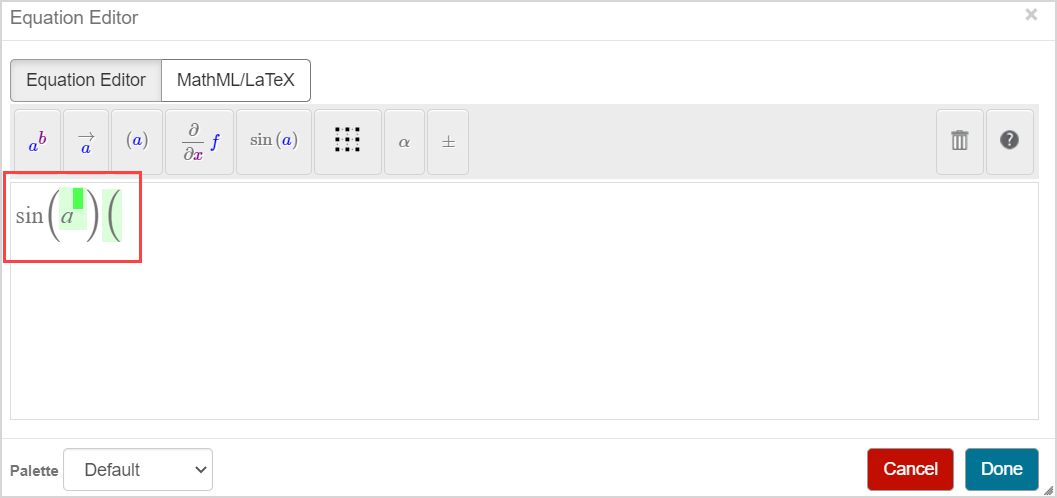
Entering a value into the placeholder or adding a matching parenthesis will remove the Syntax Checker's highlighting.
TIP: Check out the Shortcuts section of this help topic for tips on how to quickly navigate the template placeholder values to replace them with your custom values.
Repeat steps 2 to 5 as many times as needed.
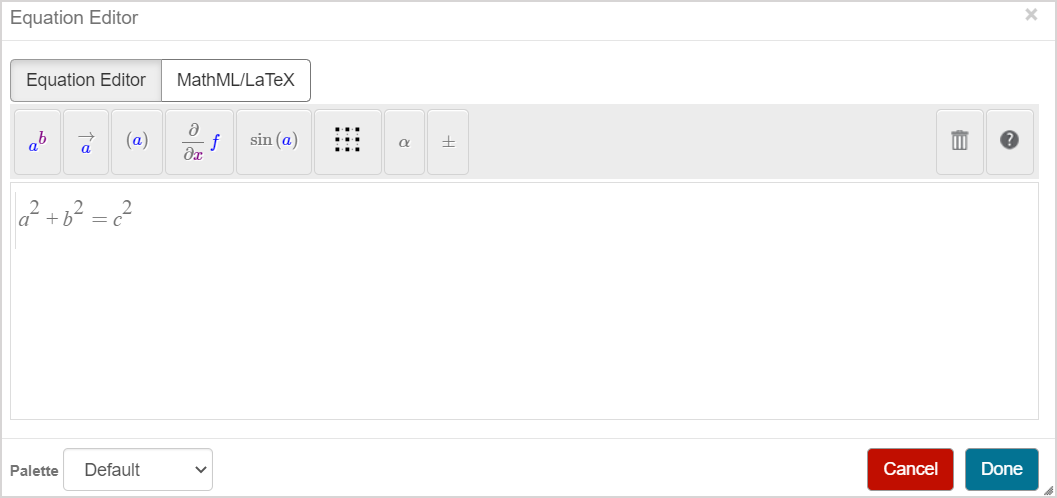
TIP: Clear your Equation Editor entry field by clicking the delete icon![]() .
.
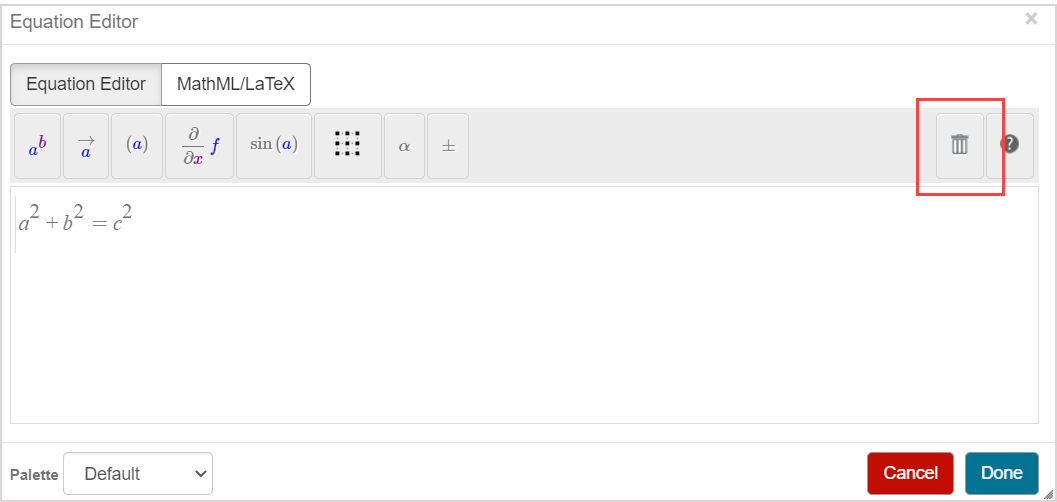
Click Done to insert your formatted expression or equation into the content being authored.

Continue working on the item you're authoring with your symbolic expression or equation inserted.

Shortcuts
You can use the following keyboard shortcuts while working with the Equation Editor:
| Keyboard shortcut | Description |
|---|---|
| Ctrl+Spacebar | Symbol completion |
| Tab | Cycles your cursor through the blank positions in an expression |
| Shift+^ (caret) | Superscript |
| Shift+_ (underscore) | Subscript |
| / (backslash) | Fraction |
| Ctrl+' (apostrophe) | Underscript |
| Ctrl+Shift+" (quotations) | Overscript |
| sqrt (and then symbol completion) | Square root |
| nthroot (and then symbol completion) | Root |
| Ctrl+Shift+^ | Pre-superscript |
| Ctrl+Shift+_ | Pre-subscript |
| Ctrl+/ | Return cursor to baseline |
TIP: Click Quick Help![]() to access the shortcut menu from right inside the Equation Editor.
to access the shortcut menu from right inside the Equation Editor.
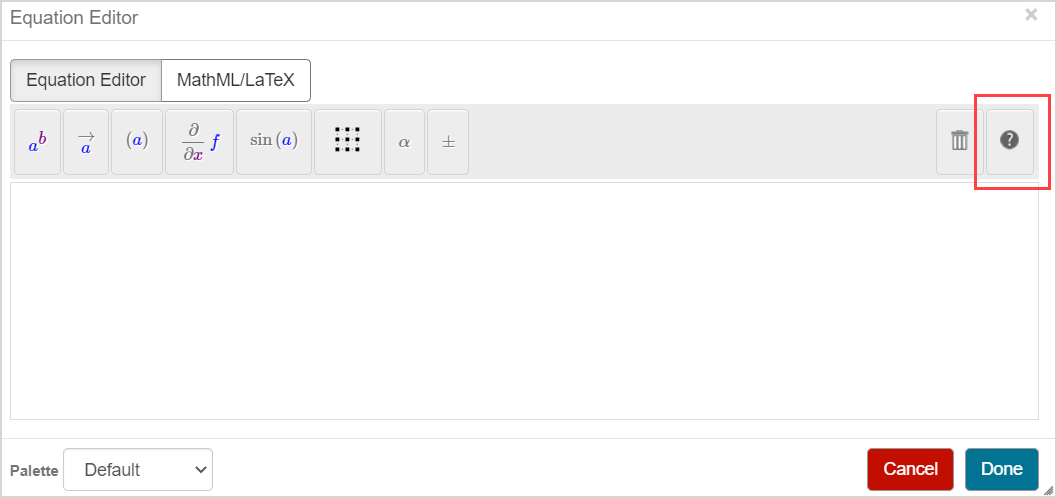
NOTE: While typing the name of a symbol, function, or operator, or the name of a variable, the font style in the Equation Editor is italicized.
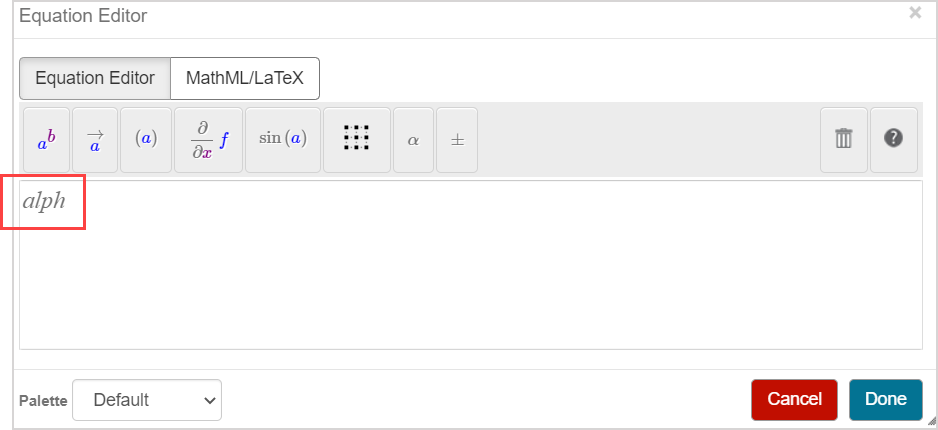
The font changes from italicized to plain font once the name of the symbol, function, or operator is complete.
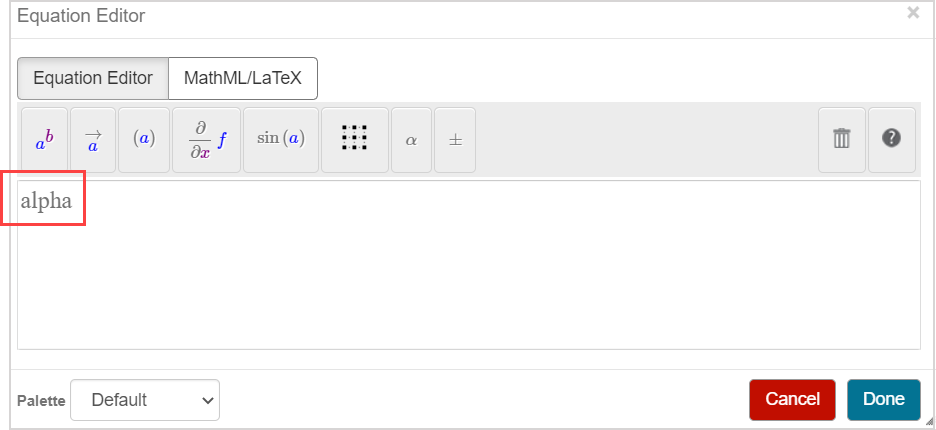
Enter MathML or LaTeX
You also have the option to enter symbolic math expressions using MathML or LaTeX.
TIP: Check out Work with LaTeX for more details on using LaTeX during question authoring.
To enter MathML or LaTeX:
Click the MathML/LaTeX tab within the Equation Editor.
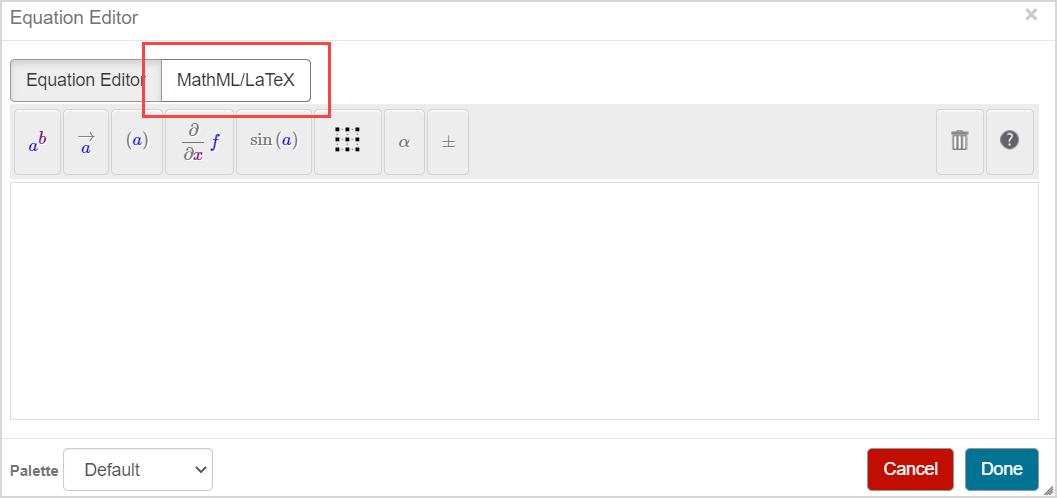
Enter your MathML or LaTeX code into the text field.
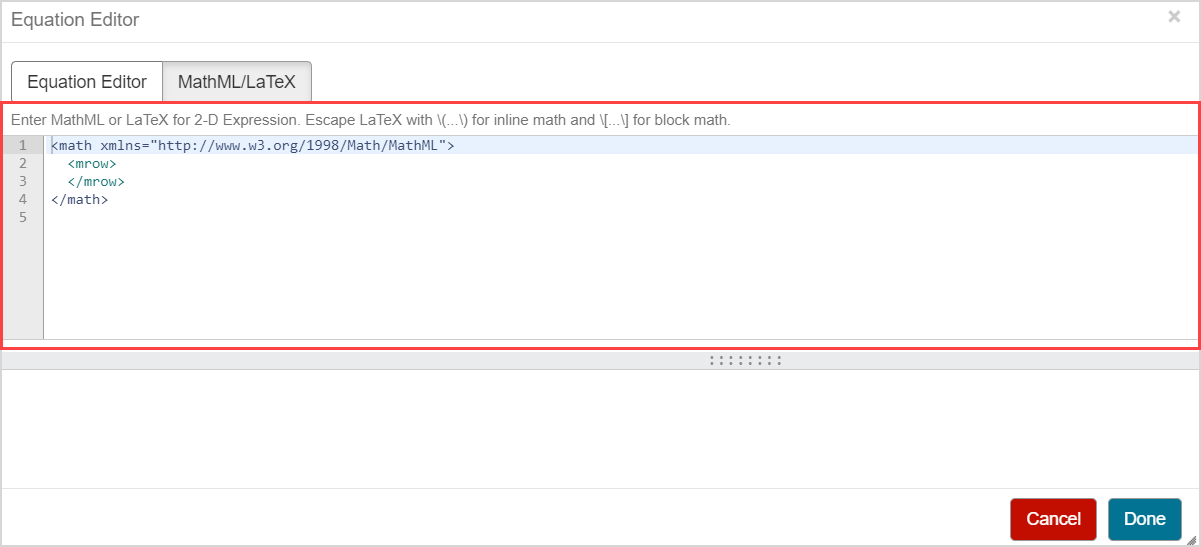
TIP: Use the following escape character sequences for LaTeX:
- \(...\) for inline math
- \[...\] for block math
TIP: Click the Equation Editor tab to return to the Equation Editor entry field.

NOTE: A preview is displayed below the text field based on your MathML or LaTeX code.
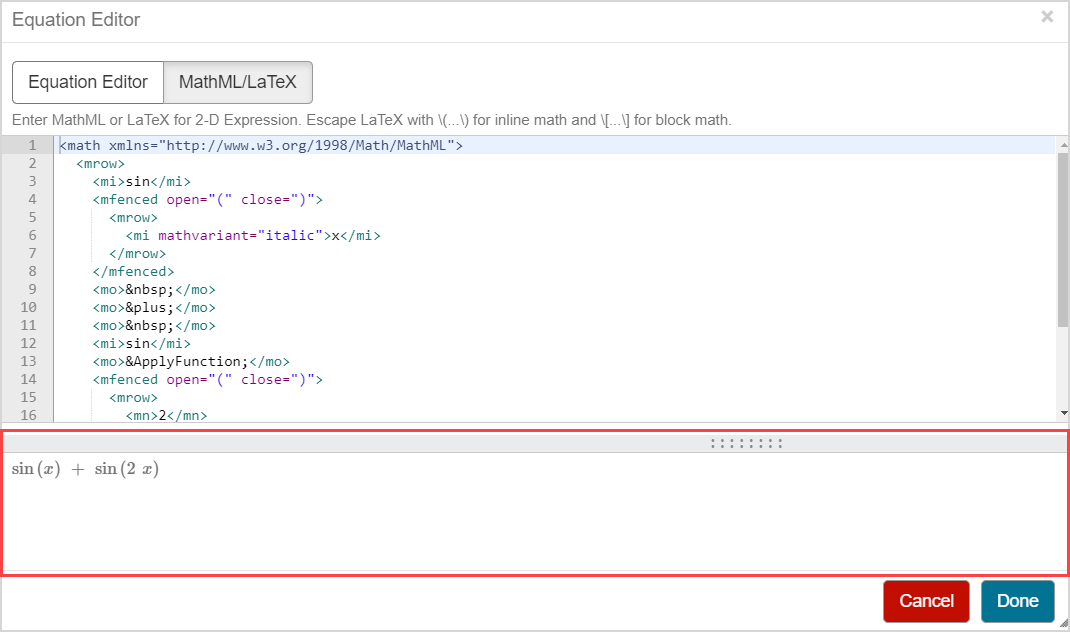
Click Done to insert your formatted symbolic expression into the item being authored.

NOTE: The MathML and LaTeX options are only available to you as an instructor or author; not your students.
Your students and the Equation Editor
A simplified Equation Editor is also available to your students while they're attempting the following question types:
- Mathematical formula authored as one of the following sub-types:
Formula
Formula without logs and trig
Formula that matches response to within +C
Formula without simplification
Equation
Chemical equation
- Maple-graded authored as one of the following sub-types:
Formula where student can choose entry
Maple syntax with symbolic entry only
NOTE: The palettes that are available in the student Equation Editor are determined by the type of question you've authored. Example — Here are the student Equation Editors if you've authored a (A) formula sub-type of the mathematical formula question or a (B) chemical equation sub-type of the mathematical formula question:

NOTE: The Syntax Checker within the student's Equation Editor highlights potential errors in two ways:
- A green highlight indicates the detection of a potential parenthesis error or empty placeholder.
- A yellow highlight indicates the detection of a potential syntax error.
Students can click the change entry mode icon ![]() during their question attempt to toggle between Symbol Mode and Text Mode.
during their question attempt to toggle between Symbol Mode and Text Mode.
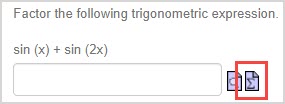
NOTE: You'll have access to these two entry modes, too, when you preview or trial your question.
In Symbol Mode, students can access the Equation Editor to enter their response in symbolic form.
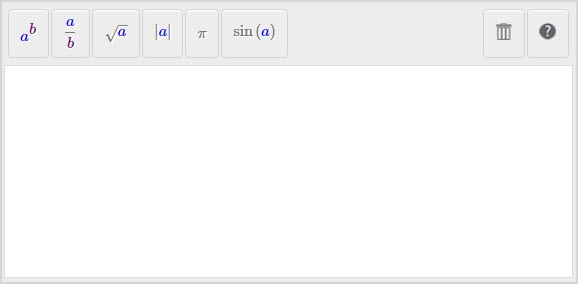
NOTE: Students have access to a robust symbol completion function where typing the name of a symbol, function, or operator will provide the student with an auto-complete option.
In Text Mode, students can enter expressions in a single line using their keyboard.

Students can also click the preview icon![]() to view their Text Mode response as a typeset mathematical expression to ensure that their syntax is being properly interpreted by Möbius.
to view their Text Mode response as a typeset mathematical expression to ensure that their syntax is being properly interpreted by Möbius.
